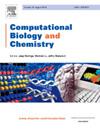In silico analysis of novel Triacontafluoropentadec-1-ene as a sustainable replacement for dodecane in fisheries microplastics: Molecular docking, dynamics simulation and pharmacophore studies of acetylcholinesterase activity
IF 2.6
4区 生物学
Q2 BIOLOGY
引用次数: 0
Abstract
Plastics play an essential role in modern fisheries and their degradation releases micro- and nano-sized plastic particles which further causes ecological and human health hazards through various environmental contamination pathways and toxicity mechanisms, which can cause respiratory problems, cancer, reproductive toxicity, endocrine disruption and neurological effects in humans. This study utilized various bioinformatics tools through multi-step computational analyses to investigate the interactions between prevalent fisheries microplastics and the key protein receptor acetylcholinesterase (AChE), which is associated with neurotoxicity, as it can interfere with nerve impulses and muscle control. Our results indicate that the binding of seven polymers within AChE's active site, with dodecane and polypropylene exhibited highest affinity with hydrogen bonding were observed through Molecular docking of different program (PyRx) and servers (CB-Dock, eDock) then the stability of AChE-dodecane and AChE-polypropylene complexes were observed through MD simulations for 100 ns. Further analysis of dodecane was done by using pharmacophore modelling and virtual screening. The pharmacophore model of dodecane is based on six hydrophobic rings. Using this model, we screened among thousands of substrates form (CMNPD, COCONUT, NPASS, NANPDB, and ZINC) database and identified fifty highly similar candidates that align with dodecane's structure and interaction with acetylcholinesterase (AChE). The compound triacontafluoropentadec-1-ene exhibited highest binding affinity (score: −9.6) which was further confirmed through molecular dynamics for 100 ns. The key finding for this study is triacontafluoropentadec-1-ene as a promising alternative to dodecane, and the study highlights that the integrated in silico framework presents a valuable computational model for guiding future guidelines on environmental safety through prioritizing constituents and accelerated discovery of alternatives. These findings will help us identify the most hazardous plastics through ranking and characterizing the substance for sustainably "greening" fisheries worldwide. The study forecasts the groundwork of these compounds, which may be able to reduce the environmental toxicity of microplastics in future.
求助全文
约1分钟内获得全文
求助全文
来源期刊

Computational Biology and Chemistry
生物-计算机:跨学科应用
CiteScore
6.10
自引率
3.20%
发文量
142
审稿时长
24 days
期刊介绍:
Computational Biology and Chemistry publishes original research papers and review articles in all areas of computational life sciences. High quality research contributions with a major computational component in the areas of nucleic acid and protein sequence research, molecular evolution, molecular genetics (functional genomics and proteomics), theory and practice of either biology-specific or chemical-biology-specific modeling, and structural biology of nucleic acids and proteins are particularly welcome. Exceptionally high quality research work in bioinformatics, systems biology, ecology, computational pharmacology, metabolism, biomedical engineering, epidemiology, and statistical genetics will also be considered.
Given their inherent uncertainty, protein modeling and molecular docking studies should be thoroughly validated. In the absence of experimental results for validation, the use of molecular dynamics simulations along with detailed free energy calculations, for example, should be used as complementary techniques to support the major conclusions. Submissions of premature modeling exercises without additional biological insights will not be considered.
Review articles will generally be commissioned by the editors and should not be submitted to the journal without explicit invitation. However prospective authors are welcome to send a brief (one to three pages) synopsis, which will be evaluated by the editors.
 求助内容:
求助内容: 应助结果提醒方式:
应助结果提醒方式:


